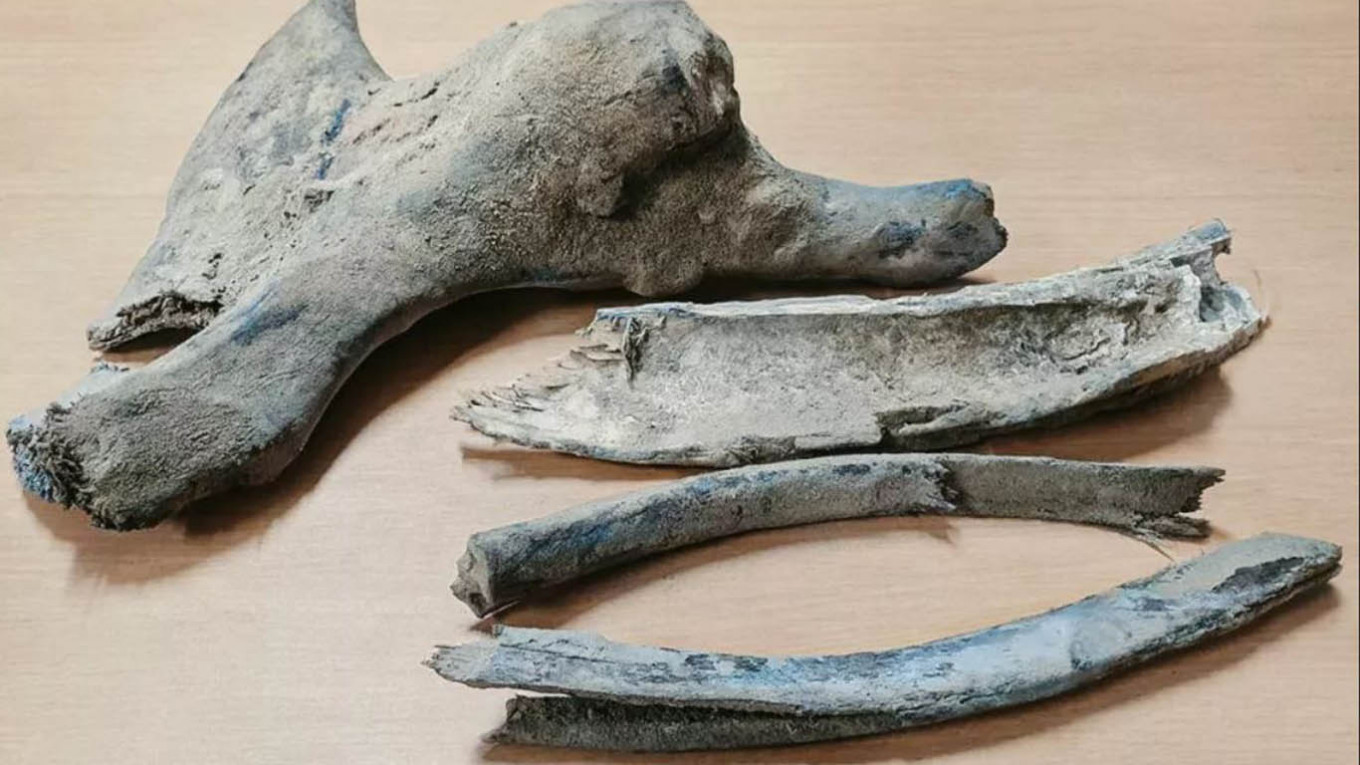
Mammoth remains have been accidentally discovered near the Arctic Circle in Russia, the latest surprise archaeological find as climate change accelerates permafrost melt and exposes the long-buried skeletons of ancient animals.
Gazprom Neft workers stumbled upon the elephant-sized animal’s skull and tusk earlier in August while working at its northernmost oil field on the remote Yamal Peninsula.
“Now workers are looking for other mammoth remains and waiting for the arrival of archeologists,” the company, a subsidiary of energy giant Gazprom, said on its social media pages.
A photo of the finding showed large skull and tusk fragments laid on the snow.
The remains are at least the second mammoth discovery during this year’s historically hot summer in the Russian Arctic, one of the world’s fastest-warming regions.
In July, archeologists uncovered a well-preserved wooly mammoth skeleton in the Yamal-Nenets autonomous district. That rare discovery included part of the animal’s skull, its lower jaw, several ribs and a foot fragment with some soft tissue still intact.
Wooly mammoths, which roamed across northern Eurasia and North America, are believed to have died out 10,000 years ago. Several mammoth skeletons have been discovered in Siberia.
Temperatures above the Arctic Circle have soared to nearly 40 degrees Celsius this summer. Climate scientists warn that melting permafrost could further contribute to global warming by releasing mass amounts of greenhouse gases into the atmosphere.
